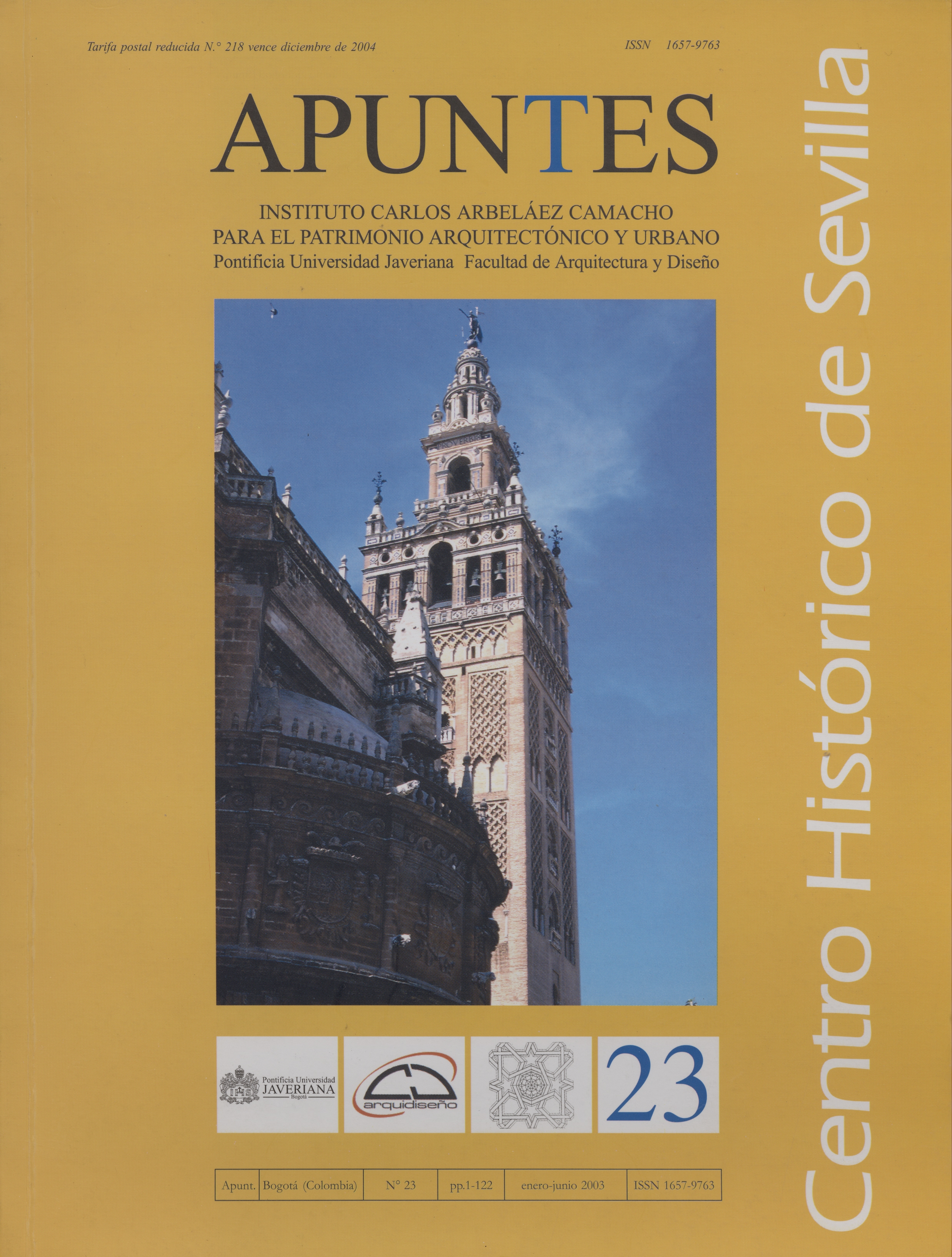Abstract
Architect Pablo Diáñez is a native of Seville and a veteran and keen expert on its historic center and its rich heritage. This text, in his own words "will try to keep an equilibrium between academic reflections and pragmatic action in dealing with the present and immediate future of what is known as the historic center of Seville". To begin with, he refers to the more recent urban evolution -the last 200 years, approximately- of the zone officially declared as "historic", so as to analize on that basis its present dysfunction, criticizing the regulatory measures adopted successively between 1963 and 1994, emphasizing how the magnitude and complexity of the historic center of the city invalidated the adoption of a single, all-encompassing plan for its protection, this having the obvious drawback of including too many buildings whose circumstantial and formal variety requires special treatment for each one. The simplification implicit in of establishing an abstract categorization (A, B, C, D, etc.) of the buildings that constitute the historic center seems today, in the light of the extreme variety of the functional and formal problems present in the city, to be wholly obsolete. Each zone of the historic center of Seville needs today a special conservation treatment. According to architect Diáñez, the typical problems in conservation and transformation of isolated buildings or urban contexts in the historic center of the city emphasize the ideological and conceptual clashes between the notions leading to the incorporation of more buildings and urban zones to the declared heritage of the city and the tendencies toward their eventual transformation and adaptation. The typical problems thus created include the physical effects of permissive measures allowing greater building heights and urban densification which have altered decisively many zones of the historic center, also causing the destruction of whole city blocks, so as to replace low and old houses by new apartment and office buildings of much greater height and density. The main expectation of the Seville Historic Center for the immediate future must be the adequate management of its public space, which qualifies as the city's most important cultural heritage. The most urgent measures to be proposed include the taking in charge by its citizens of the public space and its truly cultural use; as well as the decontamination of its environment, the suppression of commercial publicity, an adequate and rational system of signs and the provision of urban equipment and public lighting at a level of design in accordance with the present time.Apuntes is registered under a Creative Commons Attribution 4.0 International Public License. Thus, this work may be reproduced, distributed, and publicly shared in digital format, as long as the names of the authors and Pontificia Universidad Javeriana are acknowledged. Others are allowed to quote, adapt, transform, auto-archive, republish, and create based on this material, for any purpose (even commercial ones), provided the authorship is duly acknowledged, a link to the original work is provided, and it is specified if changes have been made. Pontificia Universidad Javeriana does not hold the rights of published works and the authors are solely responsible for the contents of their works; they keep the moral, intellectual, privacy, and publicity rights.
Approving the intervention of the work (review, copy-editing, translation, layout) and the following outreach, are granted through an use license and not through an assignment of rights. This means the journal and Pontificia Universidad Javeriana cannot be held responsible for any ethical malpractice by the authors. As a consequence of the protection granted by the use license, the journal is not required to publish recantations or modify information already published, unless the errata stems from the editorial management process. Publishing contents in this journal does not generate royalties for contributors.


